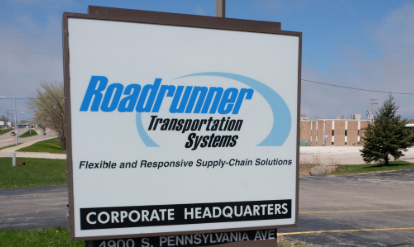Roadrunner Transportation Systems Reports Full Year 2018 Operating Results

Positive financial outlook for 2019 and beyond
Curt Stoelting, CEO commented. “Overall we made good progress in 2018 on a number of fronts. Operationally, over two-thirds of our businesses are now stable and growing. Ascent Global Logistics and Active On-Demand have led the way followed by our temperature controlled, intermodal services and flatbed businesses, all of which achieved improved stability 2018 and are positioned for growth in 2019.”
Stoelting continued, “We are disappointed in the short-term performance of our dry van truckload fleets and are actively developing plans to streamline these businesses. Lastly, we continue to make steady progress and improvements in our LTL segment where we reduced our operating losses in the fourth quarter versus the prior year quarter and continued to see operational benefits from eliminating selected service areas, improving our freight and lane mix and lowering our operating costs. We believe improving our dry van businesses and LTL segment will add significant value to Roadrunner.”
“With the recent completion of the rights offering and debt refinancing, we now have the capital structure to fully support our long-term business plans which we believe will increase the speed and likelihood of a full operational recovery followed by additional growth and optimization opportunities,” Stoelting added.
Financial Outlook
The company has longer-term business goals to deliver higher levels of profitability and sustainable returns on invested capital. The company expects to increase its Adjusted EBITDA in 2019 with improvements in all three segments. Over the longer-term, the company expects that segment margins will increase to be in-line with peer group margins and that the structural changes currently being implemented will result in profitability that is more resilient and better positions Roadrunner for success throughout natural industry cycles.
2018 Full Year Results
Revenues for the year ended December 31, 2018 were $2,216.1 million. Revenues for the year ended December 31, 2017 were $2,091.3 million, including $67.6 million of revenues from Unitrans which was divested in September of 2017. Excluding Unitrans, revenues grew 9.5%. Higher revenues in the TES and Ascent segments contributed to the increase, which were partially offset by lower revenue in the LTL segment.
- Revenue increases of 13.2% in TES resulted primarily from higher rates across all businesses and strong volume increases in air and ground expedite at Active On-Demand.
- Revenue declines in LTL were a result of planned reductions in service areas and pricing discipline to drive more shipments into higher density lanes; lower shipment counts were partially offset by higher rates and average shipment size which yielded an increase in revenue per shipment.
- Ascent revenues, excluding Unitrans, grew by 14.0% benefitting from growth in all three service offerings; retail consolidation drove higher percentage growth due to new customer starts and increased volumes and rates from existing customers.
Operating loss for the year ended December 31, 2018 was $58.5 million, which included corporate restructuring and restatement costs of $22.2 million, operations restructuring costs of $4.7 million, a contingent purchase obligation of $1.8 million and non-cash fleet impairment charges in intermodal services of $1.6 million. The operating loss for the year ended December 31, 2017 was $36.5 million, which included:
- A gain on the sale of Unitrans of $35.4 million;
- Corporate restructuring and restatement costs of $32.3 million;
- Non-cash impairment charges of $4.4 million related to the revaluation of the Ascent segment goodwill after the sale of Unitrans;
- Unitrans operating income of $5.8 million; and
- Legal reserves of $5.7 million.
Net loss increased to $165.6 million for the year ended December 31, 2018, compared to $91.2 million for the year ended December 31, 2017, due primarily to the items affecting operating loss discussed above, increased interest costs of $56.0 million related to the company’s preferred stock and a lower federal tax rate. These increases were partially offset by lower bank debt interest costs and the absence of a loss from debt extinguishment of $15.9 million that occurred in 2017.
Diluted loss per share available to common stockholders was $4.30 for the year ended December 31, 2018, compared to diluted loss per share of $2.37 for the year ended December 31, 2017.
Adjusted EBITDA improved by $18.8 million to $17.3 million for the year ended December 31, 2018 compared to an Adjusted EBITDA loss, excluding the impact of Unitrans, of $1.6 million for the year ended December 31, 2017. The improvement was due to higher Adjusted EBITDA in the TES and Ascent segments and lower corporate costs in 2018, partially offset by lower Adjusted EBITDA at LTL.
Category: Featured, General Update, News










